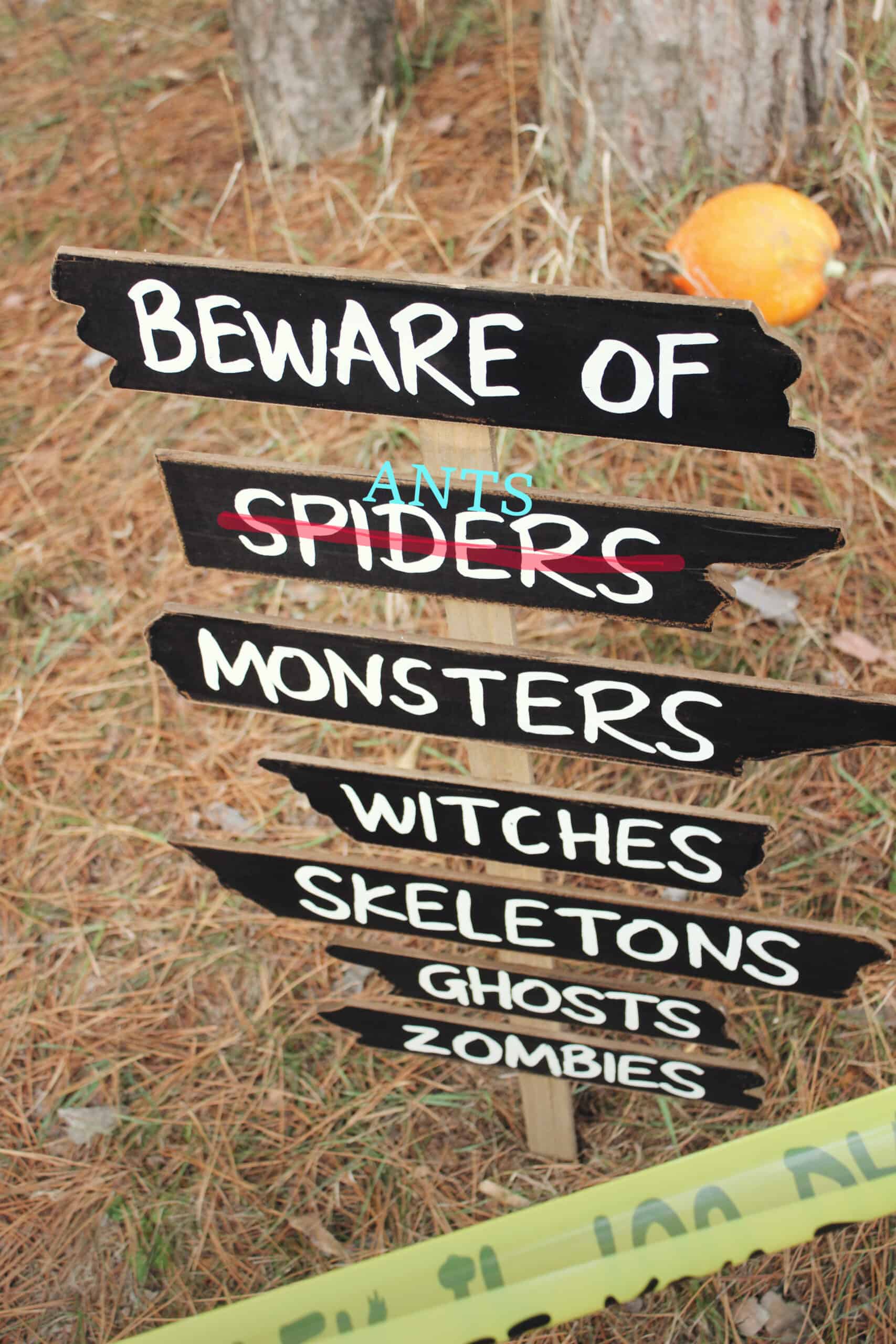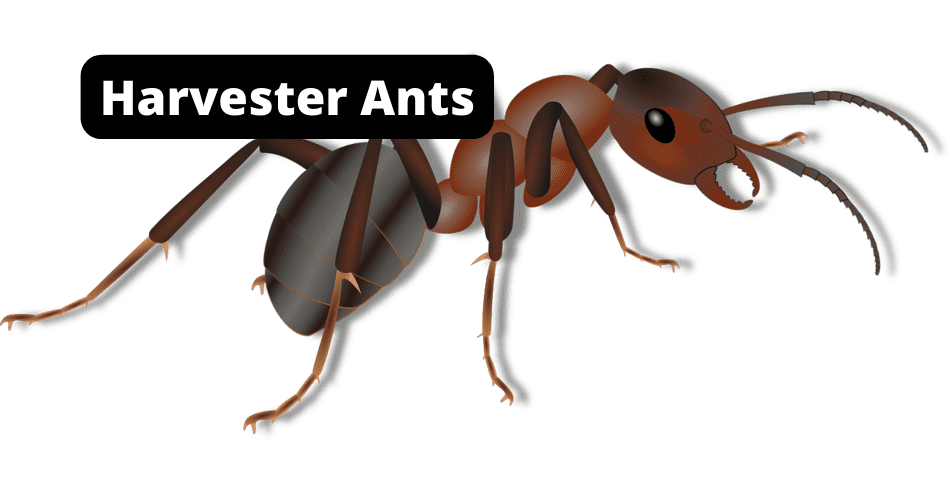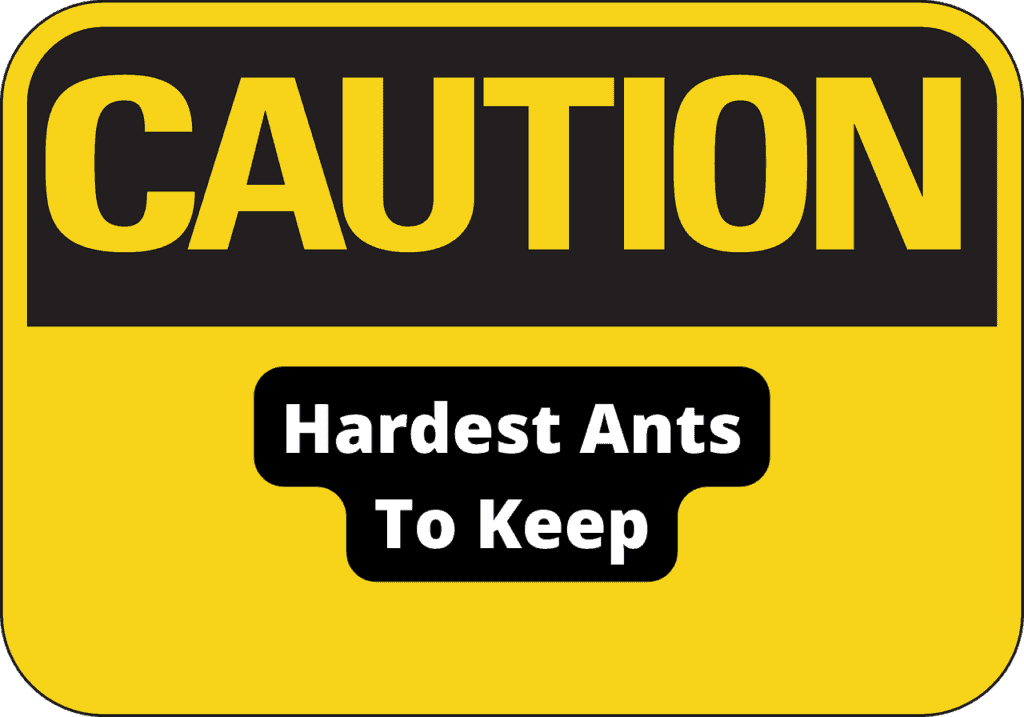There are more than 10,000 species of ants as of today. These different species can be found on almost all continents on the globe.
You can spot ants anywhere, especially if you’re outside enough.
Finding and starting an ant farm is not that hard!
…This assumes that you have some knowledge on the different types of ants that are easy to keep.
Having the wrong type of ant can be a disaster.
Some of the Hardest Ants to Keep
The ants you should avoid as a beginner ant keeper are the Argentine Ant, Saifu Ant, Bullet Ant, Pony Ant, Green Tree Ant, Odorous House Ants, Meat Ant, Bullhorn Acacia Ant, Fire Ants, and Bulldog Ants. These ants are challenging, and should only be attempted by experienced ant keepers.
This is why we hope you read through this guide, to help you not make the same mistakes that we did.
The layout of this article will first discuss some ants that are difficult for newer ant keepers.
Then at the end, we’ll talk about which ant you should look to keep as an ant keeper.
If you were looking for a guide that could ease you into ant keeping, we suggest the guideline here:
Almost all ants are capable of biting (or stinging, look here).
Most ants normally don’t pose any threat to humans, but some species of ants are really venomous and their bite can kill a grown man in 15 minutes.
Ants usually don’t bite or sting unless they feel helpless, uncomfortable or you’re too close to the queen.
These bites cause some pain and uneasiness. Most of the time these bites will not be venomous.

Ant keepers have to be really careful about the ants they are keeping and should only keep ants that don’t pose any threats to them and their children.
You have to be very cautious with any new species of ants that we keep. This is because some species of ants pose a few threats outside of just biting.
This includes destroying your furniture, items, or housing structures.
Ant keepers should always use the necessary equipment while feeding or caring for ants.
Let’s jump into the topic and discuss some of the most harmful and challenging ants to keep.
Deep Dive into the Most Difficult Ants to Keep
As we discussed before, almost every species of ants can pose a small threat to humans.
Some of their bites will eventually go away and cause minimal pain, however, some can cause death if proper handling isn’t utilized.
Some species can be dangerous to your businesses, household, and belongings.
Here are some of the most dangerous ants we should not keep as an Ant keeper
Bulldog Ants
Bulldog ants are mostly found in Australia and are extremely aggressive in nature.
This ant hunts larger insect species (that’s how you know they’re scary). This ant does in fact bite humans, and their bites can cause extreme damage.
This ant differs from other species of ants because of its size and behavior.
Bulldog Ants mostly attack when they feel helpless.
This ant uses its strong mandibles to attach to a target’s skin and then uses its stinger to bite with an extreme force that can be extremely painful.
Bulldog Ants mostly attack Carpenter Ants (read below).
Even experienced Ant Keepers would suggest not to keep Bulldog Ants as pets because of their aggressive nature and potential risks.
Fire Ants
Fire ants included more than 200 sub-species, most of these will fall under the common name tropical fire ants or ginger ants.
Fire ants are ruthless fighters when their nest is bothered.
Their venom is a mix of alkaloids and enzymes.
They don’t just bite but anchor themselves in the skin with frequent bites while injecting their venom.

A Fire Ant’s bite can cause a lot of health problems in humans. This includes swelling, burning, and stinging in the skin. With enough venom (or an allergic reaction) a Fire Ant can cause death as well.
Keeping this ruthless fighter ant can be really hard even for experienced Ant keepers. It is probably better not to keep dangerous ants like Fire Ants to prevent yourself and your family from any kind of threats.
Bullhorn Acacia Ant
The name Bullhorn Acacia is given because these ants built their nest and live in Acacia trees.
The Bullhorn Acacia Ant can grow up to 1.2 cm and is commonly found in tropical areas.
Just like most of the other ant species, it only bites when its nest is disturbed. However, this ant has been known to act with real aggressiveness.
Meat Ant
Meat Ant is mostly found in Australia and Tasmania.
Just like the name suggests, they eat meat.
Meat ants mostly attack animals that accidentally venture across their nests.
The Meat Ant can grow up to a centimeter long!
It doesn’t sting but the bite of a meat ant cause extreme pain.
Odorous House Ants
Odorous ants do not sting or bite but still are one of the toughest ants to keep.
This is because the Odorous House Ant is known to spread disease and horrible smells that can make your ant keeping experience awful. These ants really can be a problem.
This Ant is mostly found in the United States, Canada, and Mexico.
It’s better not to keep Odorous House Ants and ruin your Ant-keeping experience. Even though it does not bite, the other problems associated with the Odorous House Ant makes it really not worth it.
Green tree ant
The Green tree ant is mostly found in northern Australia.
They are really aggressive creatures and do not hesitate to bite if they feel a sense of danger.
Just like Fire Ants, they bite multiple times which can be very painful. Noto only do they bite, but they also spray acid from their abdomen into the area which can be lethal.
While seeking food, they travel far and wide and hunt small animals like spiders, and different insects.
Keeping these ants as a pet can be a real headache.
I’ll be honest, these ants can be extremely dangerous.
It is probably best to stay as far as possible from these ants.
Pony Ant
The Pony Ant is mostly found in sub-tropical regions of Asia and Australia.
It is also known as Ponerinae.
It can grow up to 0.7 cm long.
Pony ants mostly bite when they feel helpless or when their nest is disturbed.
It is not an aggressive ant but the pain caused by its sting is extremely painful.
Not the end of the world if you wanted to keep these (probably on the Fire Ant tier), just not suggested.
Bullet Ant
The Bullet ant bite is the most painful compared to any other ant species in the world. The pain from the bite is known to last up to 24 hours and causes extreme pain.
Sometimes even being granted the most painful insect, the pain inflicted has been compared to being shot. This is where the name Bullet Ant comes from.
The Bullet Ant is also one of the largest ant species and can grow up to 1.2 inches long.
They tend to hunt small arthropods with their venom by paralyzing or killing them.
Paraponera Clavata is the binomial name for a Bullet Ant.
It is also called by the name of Conga Ant and sometimes the Giant Hunting Ant.
Keeping this Ant is highly not suggested. (Obviously)
Saifu Ant
The Saifu Ant is usually found in central and eastern Africa and is also recognized as the Army Ant.
It does not build its own nest acting rather nomadic. They travel from one place to another depending on the abundance of the food source.
They destroy and attack everything in its way.
They hunt large animals as a unit and its bite is so painful it leaves animals (up to a thousand times more than their size) helpless.
The Saifu Ant is mostly found in Central and East Africa.
Argentine Ant
Argentine Ant is mostly found in northern Argentina, Southern Brazil, and also in the most temperate areas of many other countries.
The Argentine Ant can grow up to 0.3cm.
It is one of the most aggressive species of ants in the world.
Keeping this ant can quickly turn into a terrible experience.
It is also one of the most problematic ant species.
Most enjoyable Ants to Keep
We’ve discussed the most difficult and harmful ants to keep and you’re probably wondering which species of ants you should keep.
Let’s discuss the ants we can keep that are not as harmful and dangerous as we mentioned above.
The best ants to keep in ant farms are Harvester Ants i.e.
The Harvester Ants and Carpenters Ants are some of the most common ants suggested by Ant keepers.
These ants are way easier to keep compared to many other species of ants and can be a great way to start to get started as an Ant keeper.
The Harvester Ant
Harvesters ants live in a colony pinpointed around a queen.
There are 3 species of harvester ants- Red, Western, and California Harvester Ants.
The Harvest Ants’ behavior differs from species and has unique behaviors, roles, and tasks.

Harvester ants mainly feed on collected seeds and also consume minor insects and arthropods.
Harvesters ants are popular among new ant keepers because keeping the harvester ants isn’t super demanding.
They only require fruits, water, seeds, and insects to survive and don’t even need sugar water like many other species.
If you’re a beginner and don’t have much experience, but want to get started with Ant keeping then Harvesters Ant can be perfect for you.
Conclusion, Is Advanced Ant Keeping for Me?
Being an ant keeper is a great duty and responsibility.
This is because you have to watch over and take care of a whole colony!
The first challenge as a successful Ant keeper is to pick the perfect species of ant.
There are some ant species that need a little bit of experience, and some that require a lot of experience.
Don’t worry because there are also many species that don’t need experience, which makes them great for new Ant Keepers.
Grab some Harvester Ants today on your way home from work!
Happy Keeping!
